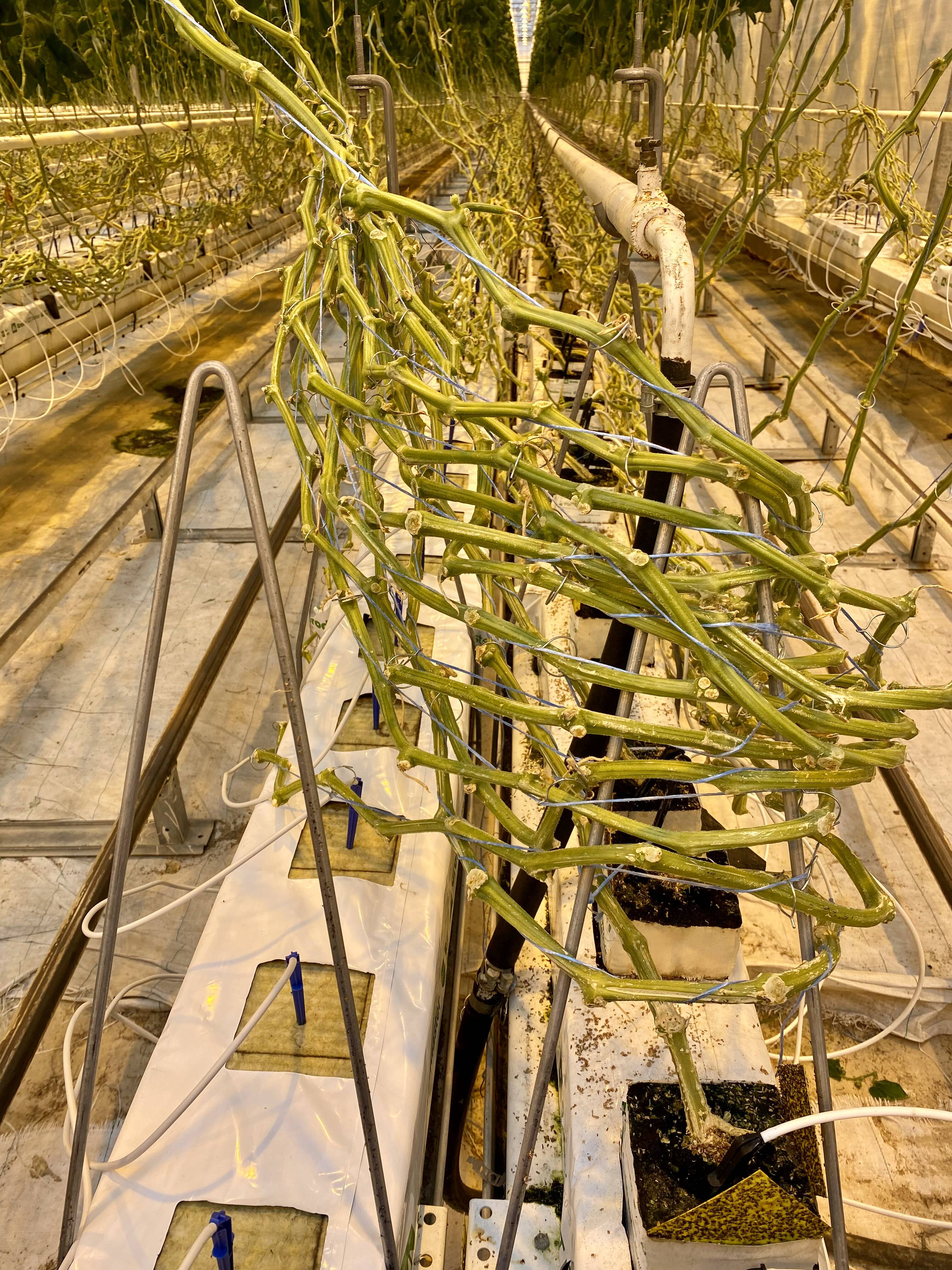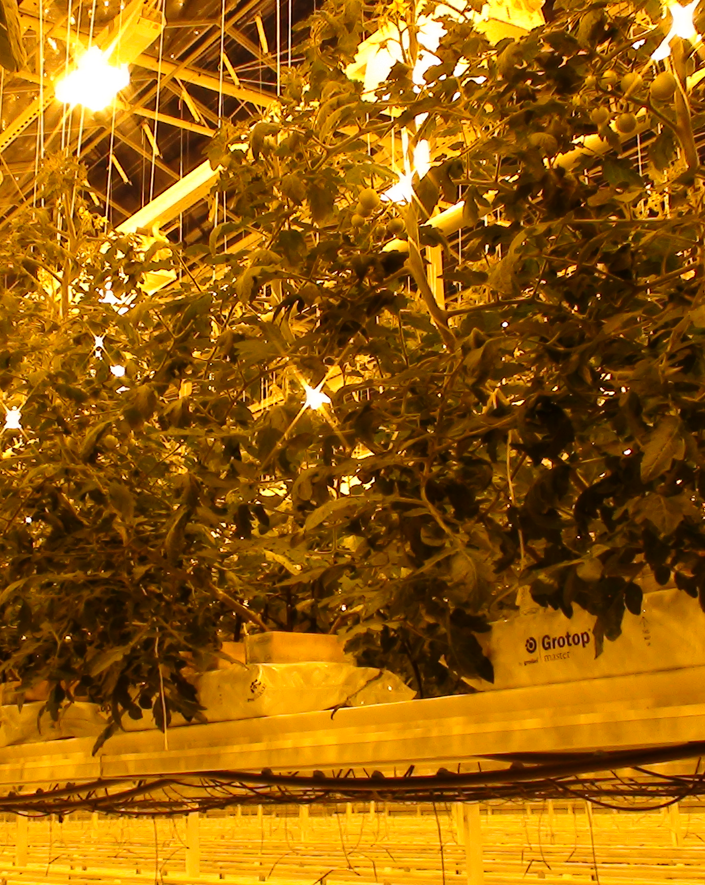
Exploring the concept of interplanting using cucumbers as an example
In conventional cultivation with artificial lighting, there is usually an approximate 4-week interval between harvesting the old plants and the commencement of fruiting in the new ones. However, in a supplemental lighting system, this downtime expands to 12 weeks without any harvest throughout the year.
Depending on the level of illumination and the greenhouse's location, this translates to approximately 265 tons (220 american tons) of cucumbers.
Interplanting is a widely used practice in both Finland and the Netherlands, with cucumbers and tomatoes being the favored crops for this method. Among the benefits of interplanting are significantly higher yields and year-round production. Notably, this approach allows producers to supply fresh produce to the market during the winter, when prices tend to be at their peak.

ADOPTION OF INTERPLANTING
IN THE NETHERLANDS AND OTHER COUNTRIES
In the Netherlands, as well as in our countries, producers are in pursuit of a balanced approach that considers the cost of equipment and the potential for productivity. Consequently, interplanting in both the Netherlands and our regions has evolved to adopt a somewhat different approach, where the greenhouse structure and internal equipment closely resemble traditional cultivation methods.
The greenhouse design typically includes an 8.0-meter span and columns with a minimum height of 6.0 meters. Within each span, there are usually five growing gutters.
There is one exception based on technical requirements, which involves the use of wider gutters (measuring 24 cm or 30 cm in width) and two separate drip lines operating from distinct mother tanks. The first growth cycle proceeds as usual. To synchronize harvest times, young plants are pre-planted, either 4 or 12 weeks before the commencement of fruiting, depending on the crop type. The process is fairly simple: new slabs are positioned in the gaps between the existing slabs, and drip emitters are inserted into the slots for each cube.

If you're considering implementing interplanting, it's crucial to have the system designed by specialists who understand its principles and can tailor it to your specific needs. It's essential to set up the system in a way that ensures it functions correctly and delivers the expected results.